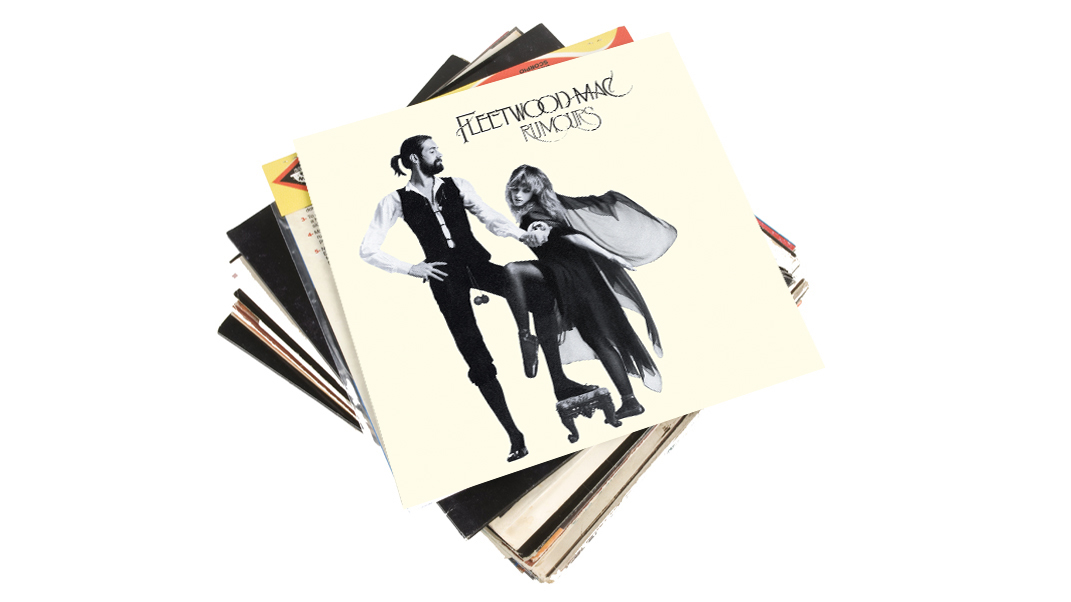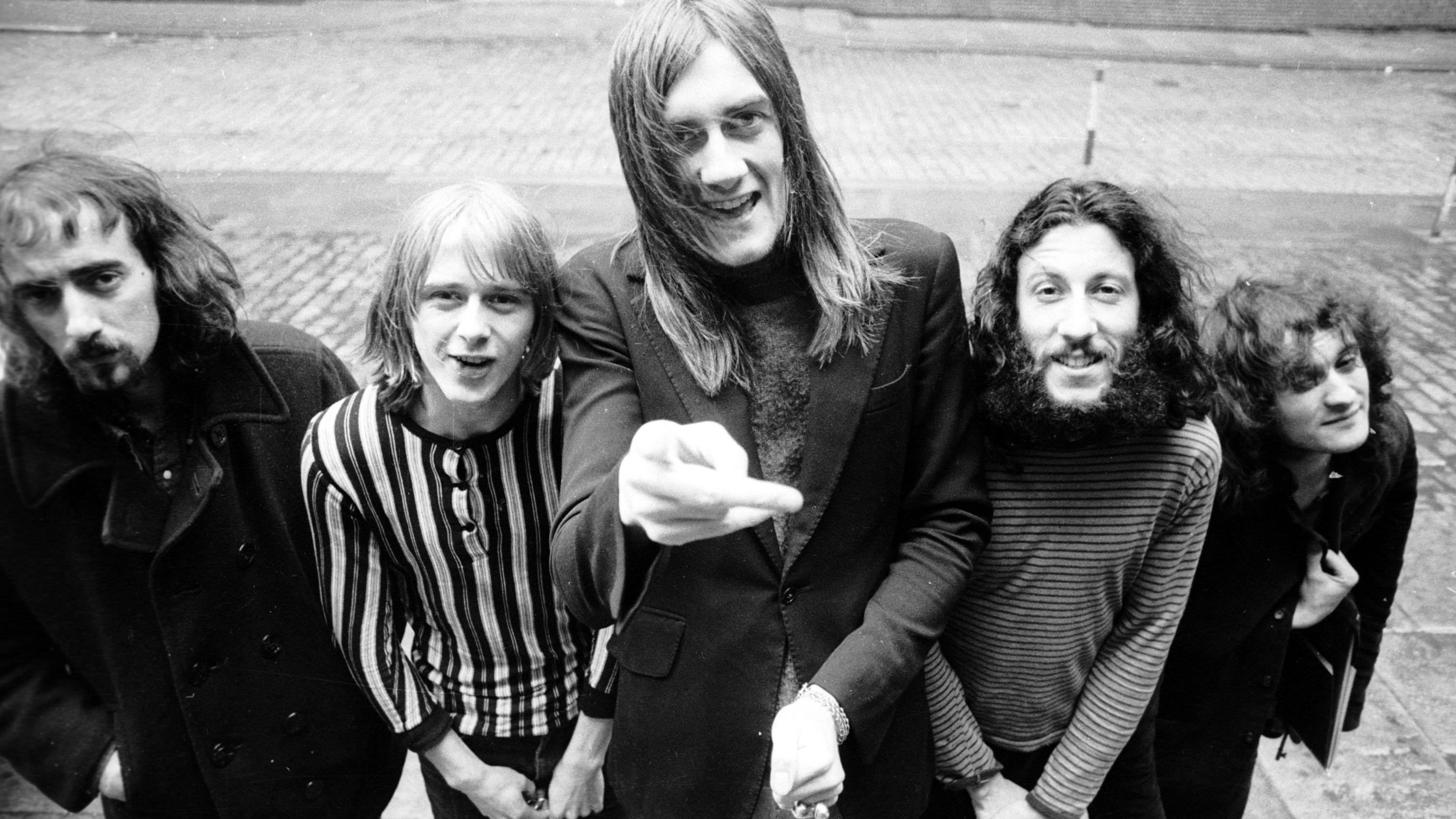
To celebrate the musical legacy of the late Christine McVie, join us as we revisit our 2012 interview with Rumours co-producer Ken Caillat, co-writer of the book Making Rumours: The Inside Story of the Classic Fleetwood Mac Album.
"Records like Rumours don't happen anymore," Ken Caillat told us back in 2012, who along with Richard Dashut and Fleetwood Mac produced the 1977 mega album that has sold a mind-boggling 44 million copies. "We spent a year and a lot of hell working on it. Lives were changed, people changed, everything became different. Something like Rumours could never happen these days. A record label would have shut us down after two weeks."
The soap opera that attended the making of Rumours has been extensively documented - married band members John and Christine McVie broke up, as did lovers Lindsey Buckingham and Stevie Nicks; even Mick Fleetwood's marriage dissolved, as well - and Caillat confirms that 1976 was a wild ride. "There were fights, breakups, drinking, drugs... We all indulged in substances. But I had to be a therapist and record producer. When everything was insane, I had to be sane. If there was a rule book, nobody game me one."
The record was like Jaws and Star Wars combined
Although 1975's self-titled release was rising up the charts during the making of Rumours, Caillat says that the band was still learning how to play together. "Basically, you had two teams: Christine, John and Mick, the three Brits, were pros, and the two Americans, Lindsey and Stevie, had their shorthand, but they were still new to the group. During the making of Rumours, they became a real band, one that was very intuitive, musically and otherwise.”

This intuition lent itself to songwriting. Rather than work with demos, the group's principle writers - Buckingham, Nicks and Christine McVie - would present live fragments of ideas for the group to build work on. "Richard and I had to capture light in a bottle," says Caillat. "The band would be tuning up, and before you knew it, a song was going down. John and Mick would hear something, they'd start playing, and we had to react fast. That kind of creativity doesn't happen these days - it's frowned upon. In 2012, a band has to have a committee approve their songs. Can you imagine Fleetwood Mac making Rumours under such conditions?"

5 unsung classic songs guitarists need to hear by… early Fleetwood Mac
Released on 4 February 1977, Rumours hit like a meteor, permanently altering the landscape of all involved. "Like Richard Dashut, I went from being a mid-level engineer to a Grammy-winning producer in one year," says Caillat. "The record was like Jaws and Star Wars combined. Everybody saw those movies, and everybody during that time bought a copy of Rumours."
In his forthcoming book, Making Rumours: The Inside Story Of The Classic Fleetwood Mac Album, Ken Caillat and Steve Stiefel recount the producer's year behind the glass in brilliant, page-turning detail. "It's amazing how everything came flooding back to me once I started the book," says Caillat. "It's one thing to remember cutting a number one song, but to think about what I was wearing that same day, that's incredible.
Get the MusicRadar Newsletter
Want all the hottest music and gear news, reviews, deals, features and more, direct to your inbox? Sign up here.
"But that's the kind of record Rumours is: You remember your first time hearing it. You even remember where you were when when you heard it. Not every album has that power. This one does. I was just lucky to be a part of it."
1. Second Hand News
Lindsey had a grand plan in his head, and he got his way
“We called it ‘Strummer.’ Before Lindsey had the structure and the words, he would strum his guitar very very hard go these chords. I always thought he’d turn it all into a song.
“A lot of Lindsey’s lyrics sparked fights with Stevie. I didn’t know exactly what was happening at the time, but words were flying around, particularly Lindsey’s, about their breakup. Stevie hated when Lindsey got even a little literal. The minute Lindsey would start singing his lyrics, Stevie stormed out and the session would end.
“Originally, John McVie had an amazing, flowing and melodic bass part. Lindsey had a problem with that. It took him a while, but eventually, while John was on vacation, he put down his own bassline, one that was very simple, just quarter notes.
“It worked, though. Lindsey had a grand plan in his head, and he got his way. This was the start of him really calling the shots. It became a ‘my way or the highway’ thing with him, which he perfected on the Tusk album.”
2. Dreams
One day she came out the pit with something called Dreams
“Stevie didn’t always have a lot to do. If she wasn’t singing, she’d bang on the tambourine, but that was about it. She had a lot more free time than the other band members.
“There was a spare room down the hall called Sly Stone’s Pit, and it had a piano. This was like heaven to Stevie. She spent hours in that place, just writing simple, three-chord songs. One day she came out the pit with something called Dreams.
“Once Stevie and Lindsey figured the song out, we had some tempo and groove problems. Things felt fine, but they had to be perfect - the rhythm had to be rock solid. Mick Fleetwood is a great drummer, one of the best, but he’d shift his parts and dynamics around - every drummer does.
“We made an eight-bar loop of Mick's playing, which created this fantastic, deep hypnotic effect. It’s funny, but when people talk about the classic rhythm section of Mick Fleetwood and John McVie and they point to this one song, I’m always amused that they’re talking about a drum loop.”
3. Never Going Back Again
A lot of our focus shifted to Lindsey and his acoustic guitar
“Lindsey had a pretty cool song called ‘Brushes’ – we called it this because we were going to have Mick do a press roll on his snare with brushes. That idea kind of went away.
“A lot of our focus shifted to Lindsey and his acoustic guitar. I noticed that anytime he played, there was a big difference in how bright his strings sounded after just 20 minutes. So I said, ‘Can we restring your guitar every 20 minutes?’ I wanted to get the best sound on every one of his picking parts. He said sure.
“It took a long time to nail everything – all day, actually – and I’m sure the roadies wanted to kill me. restringing the guitar three times every hour was a bitch. But Lindsey had lots of parts on the song, and each one sounded magnificent.
"And it did. The only problem was, when Lindsey went to sing, he realised that he played all of his guitar parts in the wrong key. Oh, man! So we recorded everything all over again the next day, dispensing with the changing of guitar strings – we had to lose all of that so we could get Lindsey singing in the right key.”
4. Don't Stop
“I never really liked this song. It was the first shuffle I ever worked on. I didn’t like the drum sound, either – maybe it’s because it started out kind of slow.
“This was Christine’s song, and she loved it, so that's all that matters. What did improve it dramatically was when she said to Lindsey, ‘It doesn’t sound that great when I’m singing it myself. Why don’t we make it a duet?’ That opened things up.
“The end is funny. The band kept changing their background vocals. Anytime I thought I knew what they’d sing, they’d do something different. That’s a hallmark of classic Fleetwood Mac, their backgrounds. They’re incredible singers.”
5. Go Your Own Way
“Lindsey was beating his acoustic guitar as hard as he could and screaming his lungs out. The first time I heard it, I thought, What the heck is going on? [laughs] It sounded so non-musical. I didn’t know if anything would come from it.
“As the months went on, we filled it out and it became a song. Lindsey figured out some fantastic guitar parts to lay down. In particular, he did an acoustic part on the 1, a flourish overdub, and that really drove the rhythm.
“There’s two guitar solos, the tag and the first one. For both, Lindsey didn’t know what he wanted - the song had progressed from an acoustic piece into this searing electric rocker. I gave him seven or eight tracks and he comped the solos. They sound seamless, as if they were totally composed, but they weren’t.
“The right drum approach was crucial. One day, Lindsey came in and said he heard Street Fighting Man by the Stones, and he thought that kind of feel would work well
“The right drum approach was crucial. One day, Lindsey came in and said he heard Street Fighting Man by the Stones, and he thought that kind of feel would work well. I remember watching him guide Mick as to what he wanted – he’d be so animated, like a little kid, playing these air tom fills with his curly hair flying. Mick wasn’t so sure he could do what Lindsey wanted, but he did a great job, and the song took off.”
6. Songbird
Christine sat on the stage and played a nine-foot Steinway, and she sounded magnificent
“Christine started playing something she had written on the piano one day, and it floored me. It was so beautiful and special, so personal – I knew I had to get just the right recording of it.
“Before Rumours, I had worked recorded an album with Joni Mitchell at the Berkeley Community Theatre. I thought doing a similar kind of concert recital recording was perfect for Songbird. Christine and the whole band loved the idea.
“The Berkley Community Theatre wasn’t available, so we used the Zellerbach Auditorium, the same kind of vibe. Christine sat on the stage and played a nine-foot Steinway, and she sounded magnificent. I used 15 tracks for the piano – two close mics and the rest were distant mics. For something like Songbird, I wanted the room to really speak.”
7. The Chain
“The very first song we worked on. It began as one of Christine’s things, something called Keep Me There. I remember Richard and I almost got fired while trying to record it because we spent five days on drum sounds – the band thought we were clueless.
“They ran through it one day and John McVie did that incredible bass line – just like that it just came to him. What a part! Next, the band began playing the tag at the end, that big rocking section. Amazing. Then, out of nowhere, Lindsey played a screaming guitar solo. Really exciting stuff.
Finally, three weeks before we wrapped the album, Lindsey figured out how to connect everything
“Over the next nine months, we’d revisit the song. There was great playing on tape, but it still wasn’t right. Finally, three weeks before we wrapped the album, Lindsey figured out how to connect everything. He took the verses apart, played a Dobro and asked Mick to play a straight quarter-note beat on the kick. Next, Lindsey rewrote the chorus and put a whole new rhythm to it. Everything clicked.
“The Chain changed drastically over the course of a year, but there was something about it that always made people think it was worth coming back to.”
8. You Make Loving Fun
“My favourite-sounding song on the record. I just love those four clicks on the hi-hat and bam! we’re right into it, with everybody playing. I still think it sounds great.
“Originally, it was done on Christine’s Yamaha electric piano. We wanted it to sound nastier and dirtier, though, because everybody was playing very hard. I made a remark about a Clavinet, and one of the engineers said there was one in Sly’s room. We ran out and grabbed it.
To accentuate the ‘Clav-iness,’ we put it through a wah-wah pedal
“To accentuate the ‘Clav-iness,’ we put it through a wah-wah pedal. Christine couldn’t play her keyboard part and work the wah at the same time, so Mick got down on his hands and knees and worked the pedal while Christine played. Being a drummer, he knew just what kind of rhythm it needed.
“I remember when we were doing background vocals, Stevie and Lindsey were having an argument. Vicious name-calling – ‘you motherfucker’ this, 'you fucking bastard' that. Back and forth it went. The tape would start rolling and they’d sing, ‘Yooooooou make loving fun,’ just beautiful, two little angels. The tape would stop and they’d be calling each other names again. They didn’t miss a beat.”
9. I Don't Want To Know
“We had a song called Silver Springs that couldn’t make the record because it was too long. That broke Stevie’s heart – she loved Silver Springs so much. But we needed something shorter, a little uptempo, and out came this kind of country thing she and Lindsey had been doing live.
“We cut the song with Lindsey and the others – Stevie wasn’t there that day – and Stevie came in later and sang her parts. It might have been the easiest song on the record. We were done with it fast. It’s a great sing-along.”
10. Oh Daddy
We had something called a Stratoblaster that we used. It fit inside the guitar and added about a 15dB boost
“Another early one. I think we did Oh Daddy right after The Chain. Christine played the organ and Lindsey had some wonderful guitar lines that he put down. I think he played a Strat on this song, but it could have been a Les Paul.
“We had something called a Stratoblaster that we used. It fit inside the guitar and added about a 15dB boost. I had the guitar designer Rick Turner build me one and stick it inside a little metal box. I kept it on the console and I could feed anything through it and give it a kick, just make it sound edgier and nastier.
“The song was called ‘Addy’ for a while because of a crazy studio accident. We were going to do some overdubs, and while rewinding the tape, a portable tape oscillator fell on the machine, sending it into free-wheel – the reels were spinning out of control. I jumped on the machine to stop it - and snapped the tape! Oh, man... [laughs] We listened back and there it was: ‘Oh ‘addy.’ The ‘D’ part of Christine’s vocal was cut off. My heart sunk.
“We fixed the part eventually, but for a month the song was referred to as ‘Addy.’ Nobody took my head off over the accident, but I felt terrible.”
10. Gold Dust Woman
My job became one of editing, taking all of these sections and making them flow, cutting out the fat
“It was a weird song, and truthfully, I wasn’t very excited about it. I couldn’t tell where it was going. It was typical Stevie – most of her songs, in their inception, are close to 10 or 12 minutes long, with endless verses and epic stories.
“My job became one of editing, taking all of these sections and making them flow, cutting out the fat. Stevie would go crazy – ‘Oh, that verse was about my mother! That part was about my dog!’ [laughs] These things would mean something to her, but they had to work for the listener.
Stevie had a lot of Courvoisier in her, and she did this incredible coyote-like howling at the end
“The song grew more evil as we built it. I called over to SIR and they send over a bunch of weird instruments, like an electric harpsichord with a jet phaser – that created a cool, whooshing sound. We weren’t looking for musicality, we were looking for accents, mood. We marked the keyboard with tape so Mick could play the right notes.
“Stevie had a lot of Courvoisier in her, and she did this incredible coyote-like howling at the end. She had become this witch she was always writing about. To accentuate her vocals, Mick went into this room we had miked up, and he broke sheets of glass. He was wearing goggles and coveralls – it was pretty funny. He just went mad, bashing glass with this big hammer. He tried to do it on cue, but it was difficult. Eventually, we said, ‘Just break the glass,’ and we fit it all in.”
Making Rumours: The Inside Story Of The Classic Fleetwood Mac Album by Ken Caillat and Steve Stiefel is available now. Buy at Amazon.
Lindsey Buckingham on reunion with Fleetwood Mac: "Maybe we’ll manage to see clear to have one more nice run out there. That would be the proper way to go"
Joe is a freelance journalist who has, over the past few decades, interviewed hundreds of guitarists for Guitar World, Guitar Player, MusicRadar and Classic Rock. He is also a former editor of Guitar World, contributing writer for Guitar Aficionado and VP of A&R for Island Records. He’s an enthusiastic guitarist, but he’s nowhere near the likes of the people he interviews. Surprisingly, his skills are more suited to the drums. If you need a drummer for your Beatles tribute band, look him up.










